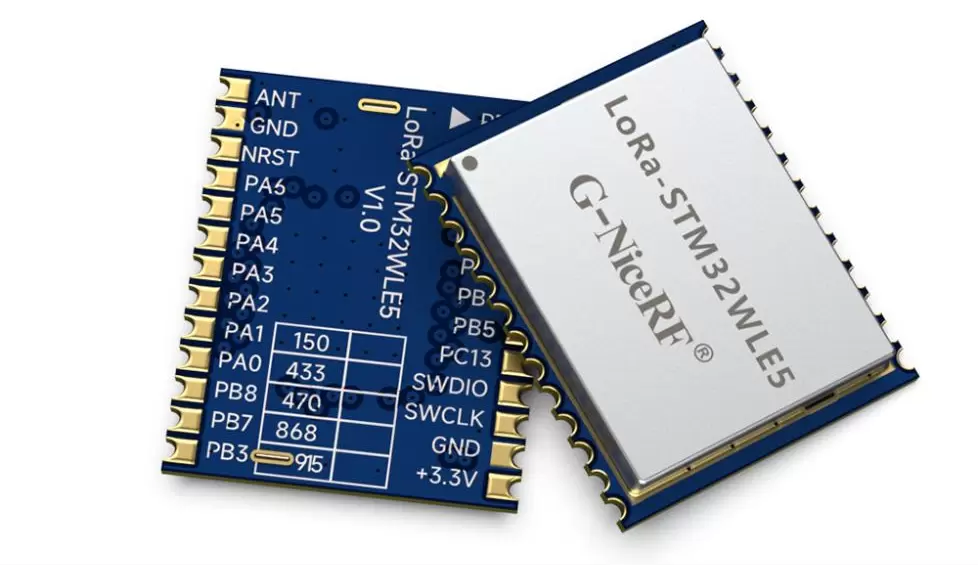How to Choose Antenna Types for Data Transmission Modules: Balancing Between Built-In and External Antennas
Features of Built-In Antennas for Data Transmission Modules
Compact Size and Lightweight:
Built-in antennas are integrated directly into the module, requiring no additional space, making them ideal for applications with strict size and weight constraints, such as smart home devices.
Strong Interference Resistance:
Due to their compact design and simpler antenna structure, built-in antennas are less affected by external environmental interference, providing stable signal transmission even in complex electromagnetic environments.
Low Power Consumption:
The simplified design of built-in antennas often results in optimized power consumption, making them suitable for devices requiring extended operation and long battery life.
Durability:
Enclosed within the module, built-in antennas are not exposed to external environments, reducing the risk of mechanical damage and making them suitable for harsh conditions.
Limitations of Built-In Antennas
Limited Size and Gain:
Built-in antennas are constrained by their size, leading to relatively low antenna gain, typically around 1-1.5 dBi. This limits signal strength and coverage range.
Short Transmission Distance:
In open environments, the transmission distance of built-in antennas is usually limited to about 100 meters. This may not meet the requirements for applications needing long-distance communication or wide coverage.
Characteristics of External Antennas for Data Transmission Modules
High Gain and Long Transmission Distance:
External antennas typically offer higher gain, ranging from 2-5 dBi. Compared to built-in antennas, external antennas provide stronger signal output and reception capabilities, enabling longer transmission distances. This makes them ideal for applications requiring extended communication ranges, as they significantly enhance signal strength and coverage.
Strong Adjustability:
External antennas allow for angle and direction adjustments to optimize signal coverage and communication performance. Adjusting the antenna's position and direction can improve signal quality and stability in various environments.
High Adaptability:
External antennas can accommodate different types (e.g., omnidirectional, directional) to suit specific environmental and application requirements. They are particularly effective for directional communication or signal transmission in complex environments.
Superior Performance:
The design and layout of external antennas are optimized for signal transmission, ensuring stable and reliable connections, especially in complex or long-distance communication scenarios.
Limitations of External Antennas
Environmental Exposure:
External antennas are exposed to external factors such as weather, temperature changes, and mechanical impacts, which can affect performance and lifespan.
Space and Weight Requirements:
External antennas require additional installation space and structural design, increasing the product's size and weight, making them less suitable for compact devices.
Increased Production Complexity and Cost:
Consideration for antenna interfaces and wiring design adds complexity to manufacturing and may raise production costs.
Comparison of Interference Resistance
Built-In Antennas:
Built-in antennas are integrated within the module, featuring compact designs that minimize exposure to external electromagnetic interference. Encapsulation within the module reduces physical and environmental interference, providing high resistance to interference. Some built-in antennas exhibit strong interference resistance at specific frequency bands.
External Antennas:
External antennas generally demonstrate stronger resistance to interference. They effectively isolate external electromagnetic interference, ensuring stable signals. With flexible designs, they can be positioned to avoid interference sources. Some external antennas include shielding features or integrate interference-resistant modules and array functions to further enhance performance.
Power Consumption Comparison
Built-In Antennas:
Built-in antennas are compact and highly integrated with the module, reducing signal transmission loss and ensuring low power consumption and stable operation.
External Antennas:
While external antennas deliver better signal coverage and longer transmission distances, they often require higher driving power, especially for long-distance communication. Wiring and connection quality may also affect energy efficiency, increasing overall power consumption.
How to Choose Between Built-In and External Antennas
Compact Design for Portability:
For small and portable devices, built-in antennas are preferred for their compact size, ease of installation, and sufficient performance for medium-to-long-range communication between airborne and ground terminals.
Long-Distance Transmission:
For ultra-long-distance transmission, Yagi antennas are ideal due to their high gain. However, their strong directivity performs best in targeted applications.
Signal Coverage Needs:
For uniform signal coverage, omnidirectional antennas are suitable, while directional antennas are better for applications requiring targeted signal coverage.
Performance Adjustment:
External antennas allow angle adjustments to optimize signal strength in specific directions. However, improper placement can impact performance.
Environmental Adaptability:
External antennas are more susceptible to environmental factors and require adjustments based on the application scenario, whereas built-in antennas are less affected by the environment.
 +86-755-23080616
+86-755-23080616
 sales@nicerf.com
sales@nicerf.com
Website: https://www.nicerf.com/
Address: 309-314, 3/F, Bldg A, Hongdu business building, Zone 43, Baoan Dist, Shenzhen, China


 English
English









